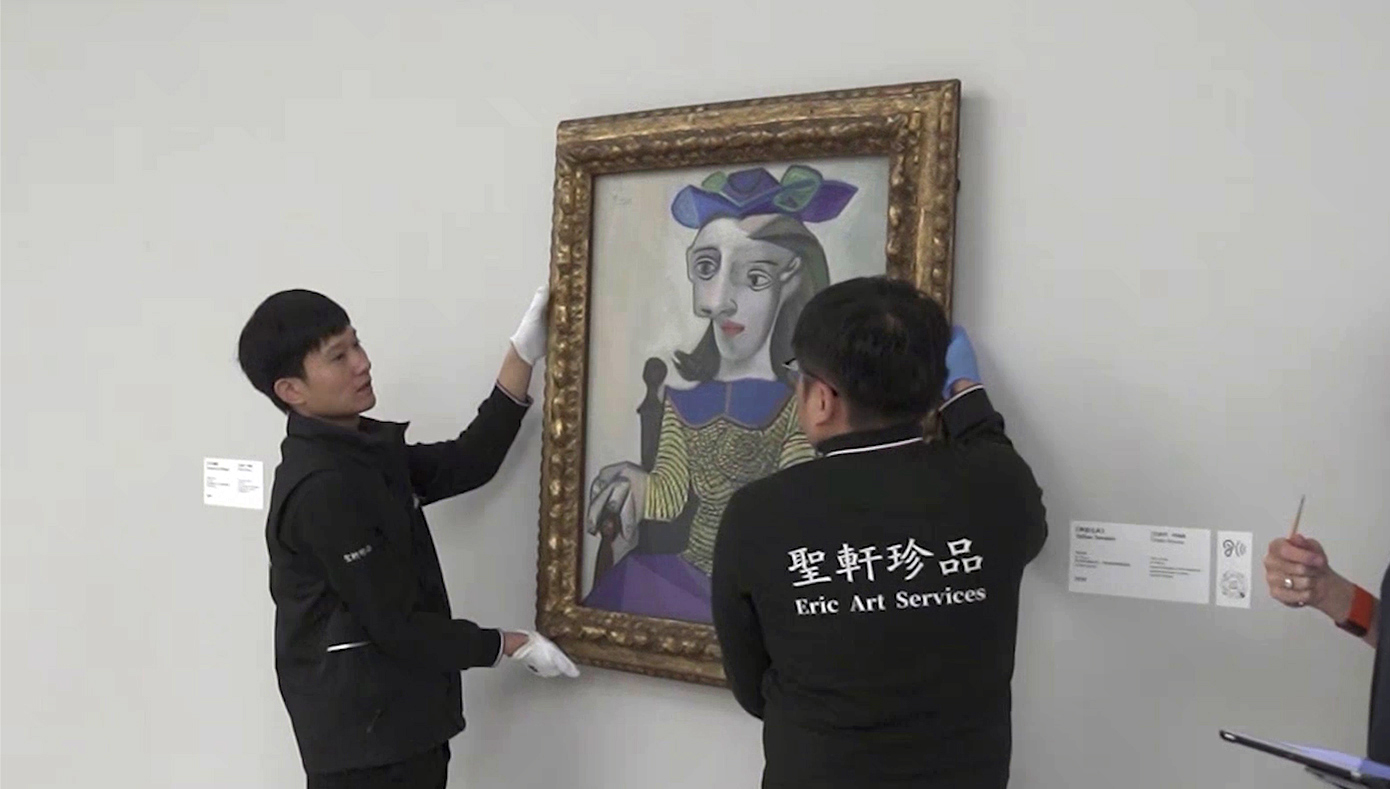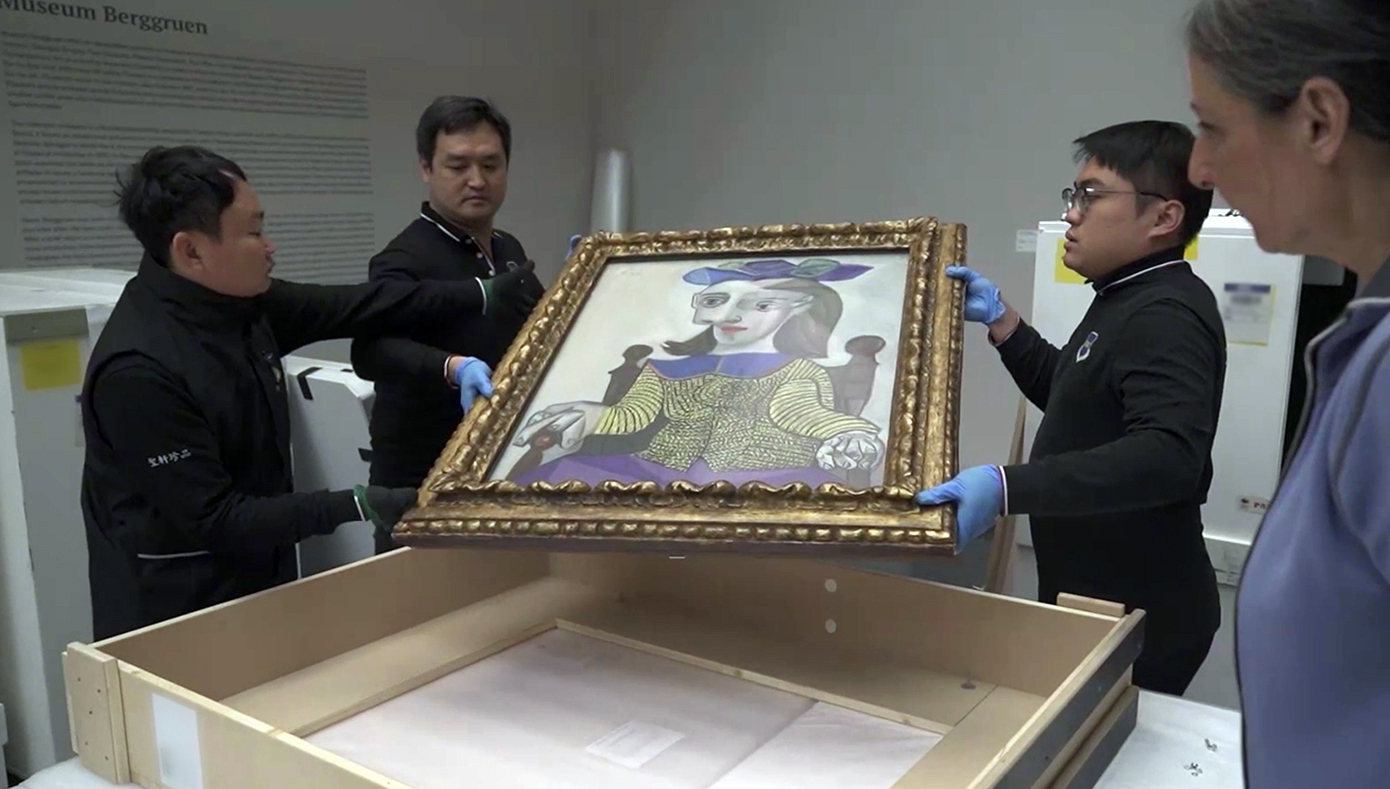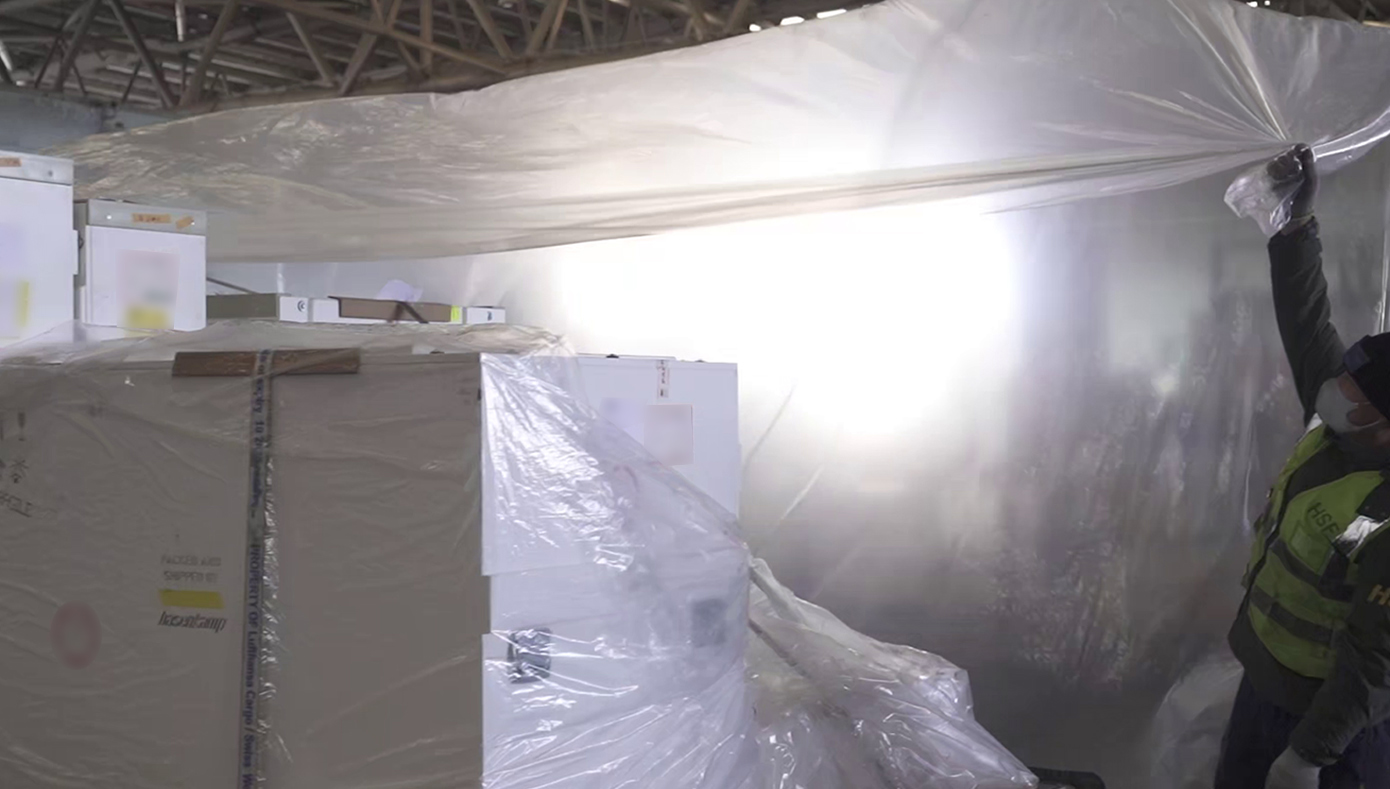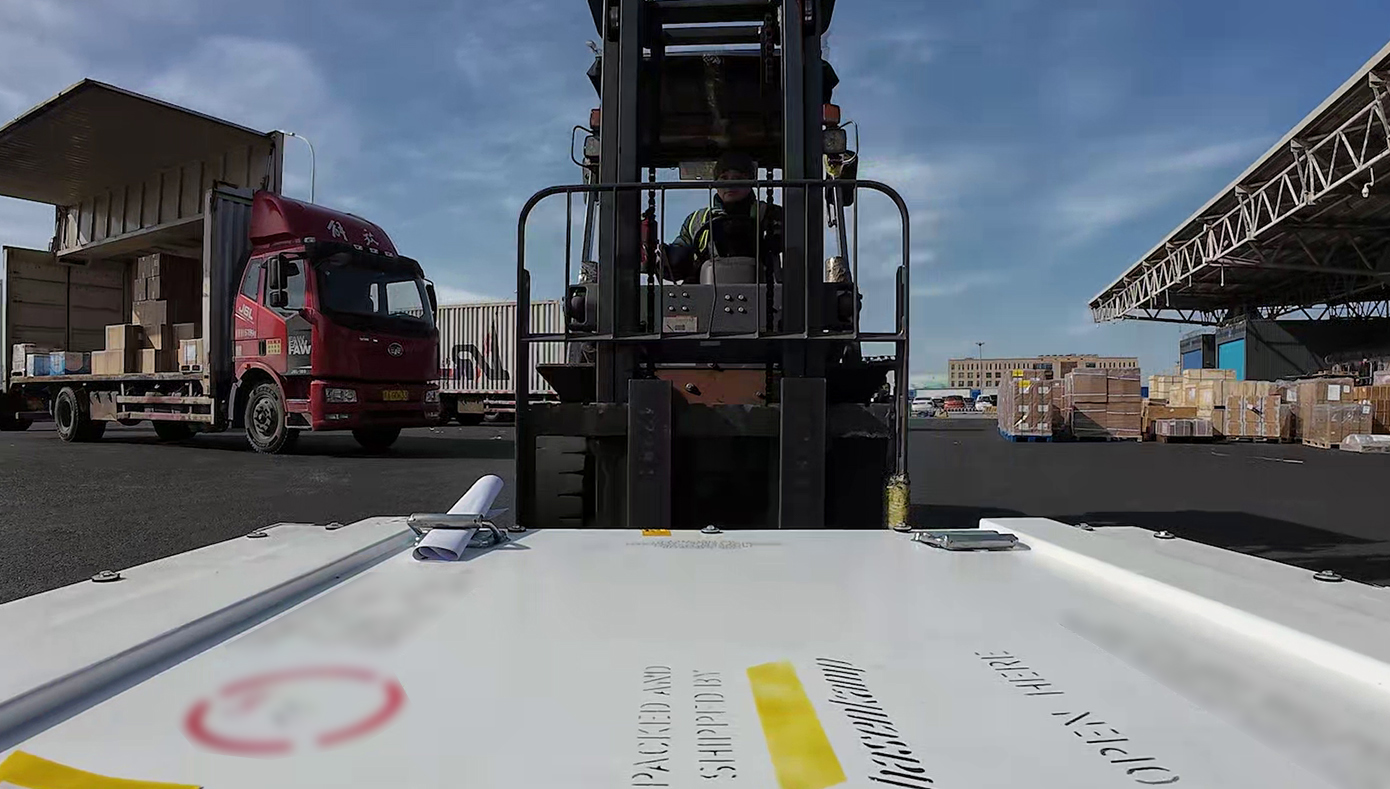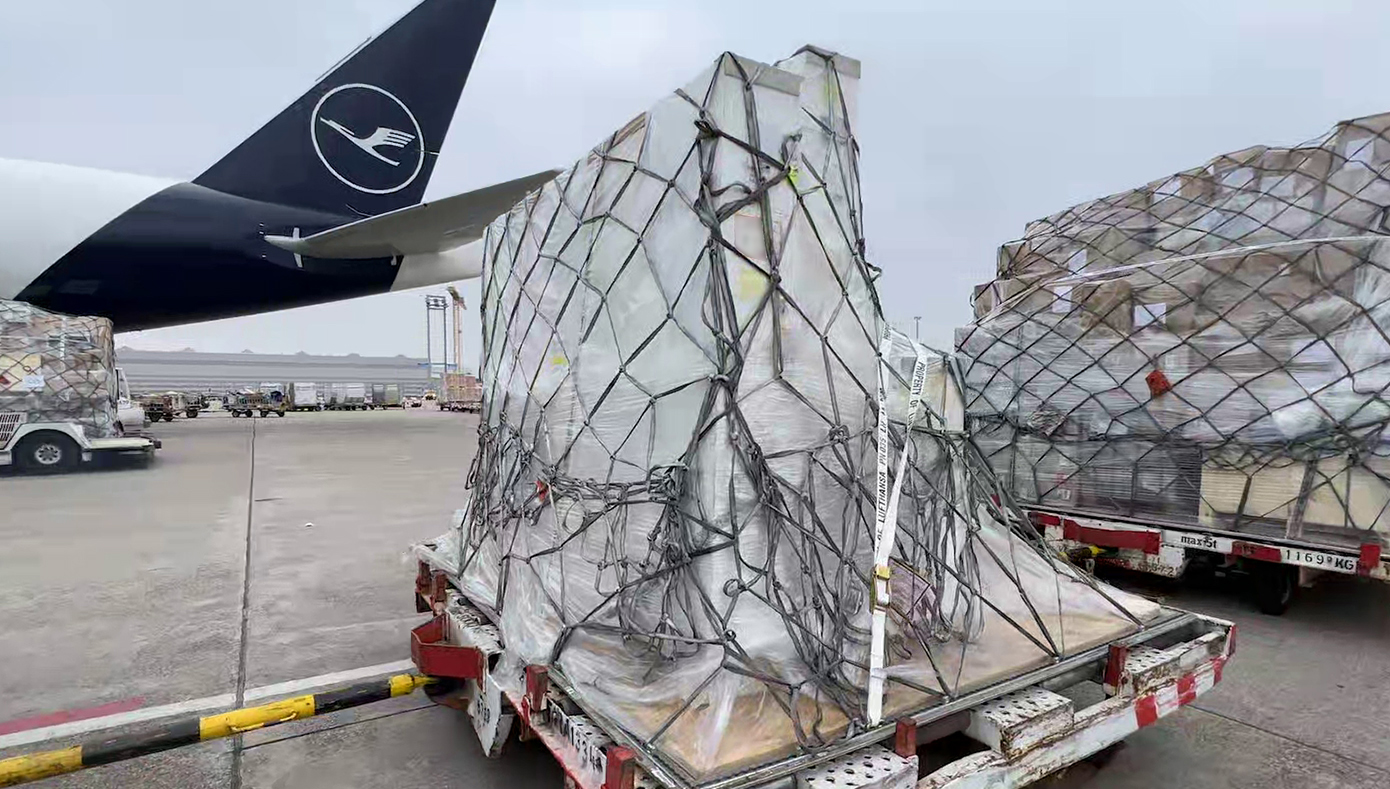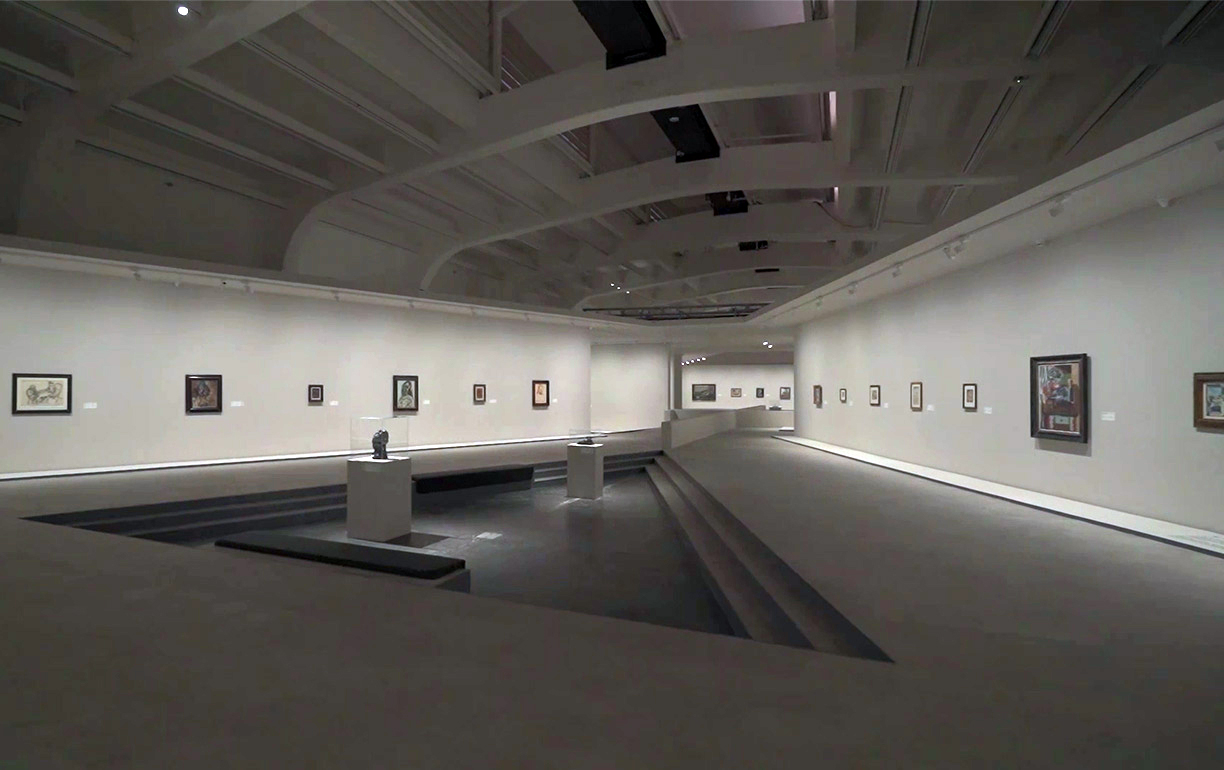
The Berggruen collection on a world tour
Berggruen! A name that everyone in Berlin and the art world knows. An art collection with history. History that is currently traveling the world.
You can watch this project also on the YouTube channel of Lufthansa Cargo.
The collection once belonged to Heinz Berggruen, one of the most important art dealers and collectors of the 20th century. Born in 1914, Berggruen grew up in a Jewish, middle-class family in Berlin. In 1936 he received a scholarship from Berkeley University in California and was thus able to flee from the National Socialists in Germany.
Sixty years later, he returned to Germany with a gesture of generosity and reconciliation with his homeland: his art collection consisting of 170 works, mainly by Picasso, Klee, Giacometti, and Matisse. The State Museums in Berlin bought the collection for 253 million Deutschmarks, a price well below its market value. Since then, the works have been exhibited in the specially renovated Stüler Building, opposite Charlottenburg Palace, on the upper floor of which Berggruen also lived during his time in Berlin. Keeping the collection in Germany was extremely important to the art collector. After Heinz Berggruen's death in 2007, his family agreed to make further works available to the Museum Berggruen on permanent loan and to continue to support the museum.
|
The collection once belonged to Heinz Berggruen, one of the most important art dealers and collectors of the 20th century. Born in 1914, Berggruen grew up in a Jewish, middle-class family in Berlin. In 1936 he received a scholarship from Berkeley University in California and was thus able to flee from the National Socialists in Germany. Sixty years later, he returned to Germany with a gesture of generosity and reconciliation with his homeland: his art collection consisting of 170 works, mainly by Picasso, Klee, Giacometti, and Matisse. |
The State Museums in Berlin bought the collection for 253 million Deutschmarks, a price well below its market value. Since then, the works have been exhibited in the specially renovated Stüler Building, opposite Charlottenburg Palace, on the upper floor of which Berggruen also lived during his time in Berlin. Keeping the collection in Germany was extremely important to the art collector. After Heinz Berggruen's death in 2007, his family agreed to make further works available to the Museum Berggruen on permanent loan and to continue to support the museum.
|
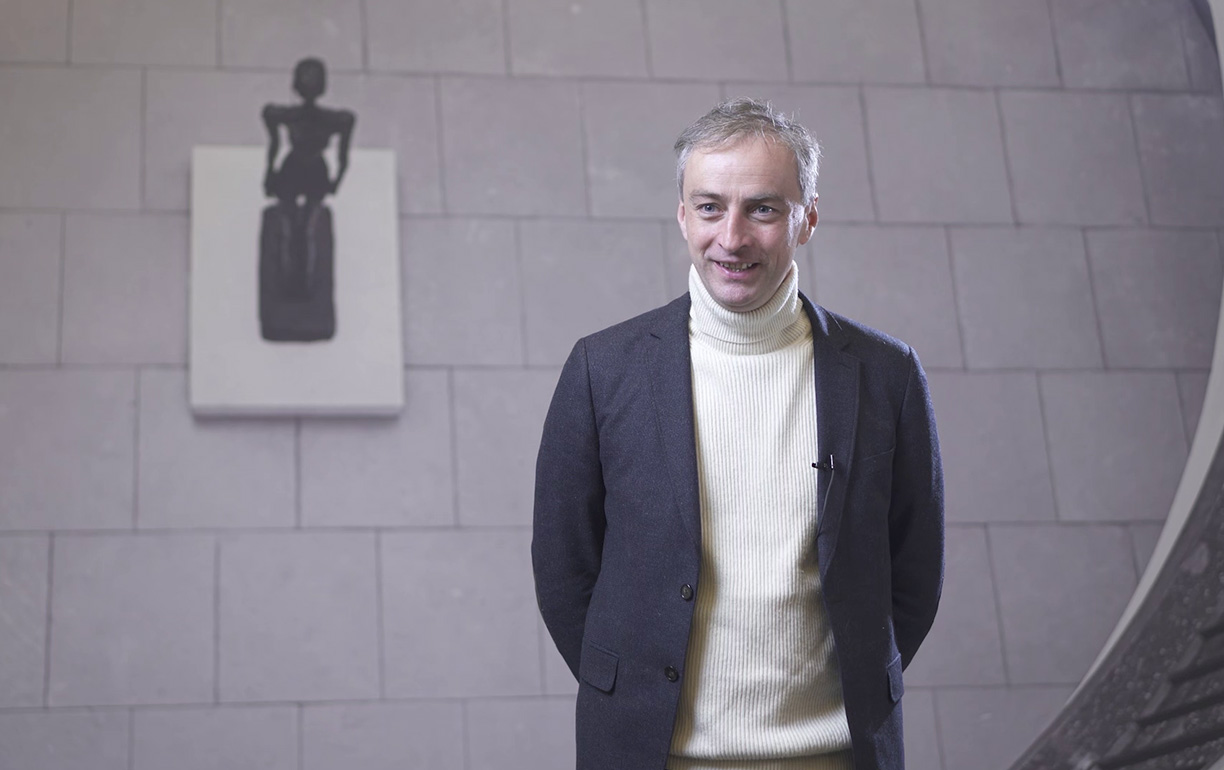
Gabriel Montua, Head of Museum Berggruen, explains what is so special about the collection: "The collection is unique in the sense that it was chosen and selected by one individual, Heinz Berggruen, according to the tastes and the currents of his time. That's why it is composed of just a handful of very well-known artists from the 20th century to which he had built a very special relationship. Especially the works of Picasso, of which we have about 135 in our collection, are far more than most other museums have. And when you're in Berlin or you are visiting one of the museums we collaborate with, you can truly walk through the galleries and experience nine decades of Picasso's works."
The museum has been under renovation since September 2022. A large part of the exhibition has been traveling since then. Tokyo, Osaka, Shanghai, Beijing, and Venice have been the stops so far. The exhibition flew from Germany to Japan and from Beijing back to Europe with Lufthansa Cargo.
Transporting a shipment of this size is no everyday business. A total of 91 works of art in 42 bespoke climate crates were transported on five flights. The largest works found space on board the B777 freighter. Other works of art flew in the bellies of the Lufthansa passenger aircraft from Beijing. The Lufthansa Cargo network offers extensive possibilities. The current 17 B777Fs are among the largest and most efficient freighters of their generation and will offer 82 weekly connections worldwide in the 2024 summer timetable. In addition, there is a short and medium-haul network of A321 freighters and over 7,000 weekly flights in the cargo holds of passenger aircraft operated by Lufthansa, Austrian Airlines, Brussels Airlines, Discover Airlines and SunExpress. Even the largest works of art can be accommodated in the B777F. The freighter currently connects the Chinese capital with Frankfurt five times a week. In addition, there are daily connections with Lufthansa's A340 to Frankfurt and also daily connections to Munich with the A350.
When transporting large consignments of art, however, it is not just a flexible route network that is important. Above all, it is about the professional transportation of irretrievable goods. In addition to Lufthansa Cargo, the Berggruen Museum relied on Hasenkamp and Eric Art Services.
|
The museum has been under renovation since September 2022. A large part of the exhibition has been traveling since then. Tokyo, Osaka, Shanghai, Beijing, and Venice have been the stops so far. The exhibition flew from Germany to Japan and from Beijing back to Europe with Lufthansa Cargo. |
The current 17 B777Fs are among the largest and most efficient freighters of their generation and will offer 82 weekly connections worldwide in the 2024 summer timetable. In addition, there is a short and medium-haul network of A321 freighters and over 7,000 weekly flights in the cargo holds of passenger aircraft operated by Lufthansa, Austrian Airlines, Brussels Airlines, Discover Airlines and SunExpress. Even the largest works of art can be accommodated in the B777F. The freighter currently connects the Chinese capital with Frankfurt five times a week. In addition, there are daily connections with Lufthansa's A340 to Frankfurt and also daily connections to Munich with the A350. When transporting large consignments of art, however, it is not just a flexible route network that is important. Above all, it is about the professional transportation of irretrievable goods. In addition to Lufthansa Cargo, the Berggruen Museum relied on Hasenkamp and Eric Art Services.
|
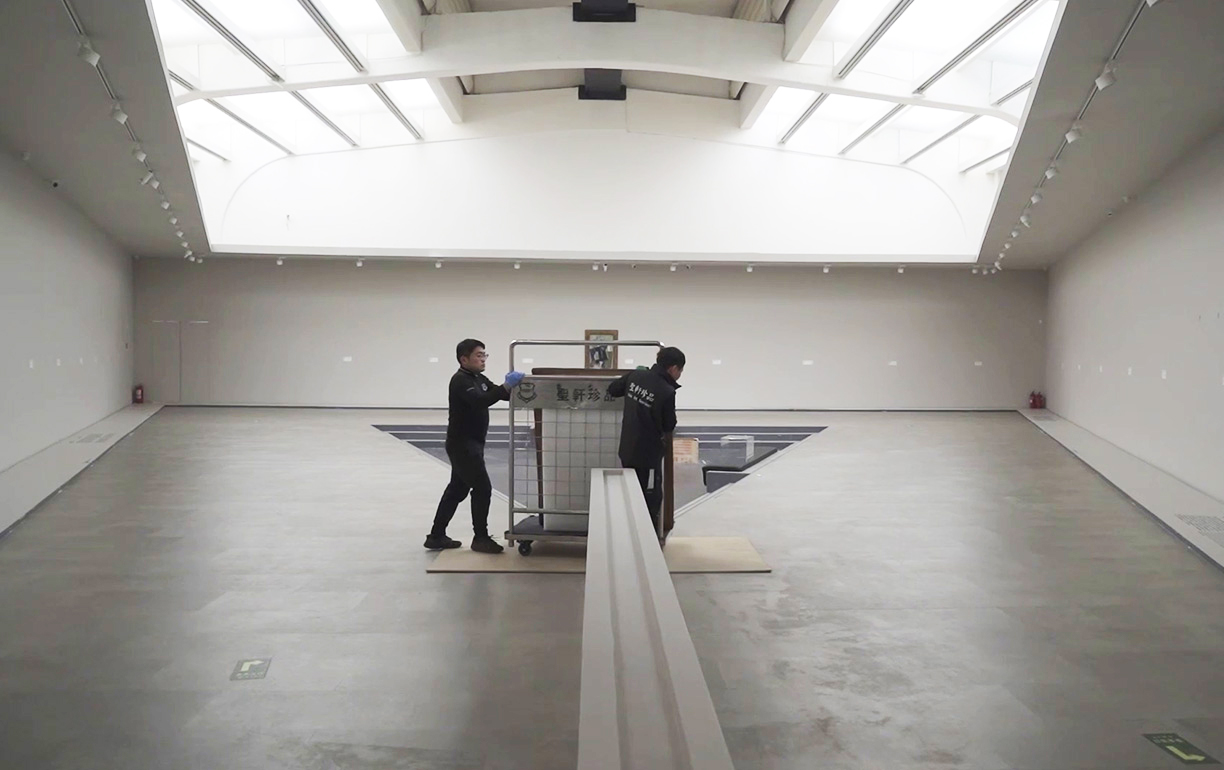
Hasenkamp can look back on over 100 years of experience in the transportation and storage of valuable and sensitive items. With around 1,000 employees worldwide, Hasenkamp is one of the leading providers in the field of art logistics. "From individual works of art to the complete inventory of entire museums, from the transport of a small-format painting to a statue weighing several tons, we can handle any project with our employees at a total of 40 locations in 28 countries. Our specialists around the world also work with specially selected service providers," says Rachel Riddell, key-account manager for Museum Berggruen in Berlin.
One of these selected service providers is Eric Arts Services. Eric Arts Services was founded in 2014 as a small company with only a few employees. Within ten years they've grown to 150 employees with 13 offices in China and one in London. "As a company in the cultural business, we deal with artworks every day. In the past year, we organized the transport of more than 800 exhibitions by all branches, including galleries, museums, auction houses and other institutions," says Stella Wang, Managing Director of Eric Arts Services. "Each piece of artwork is unique, and most of them cannot be replicated; we treat them like a newborn baby. Packaging, temperature and humidity, and route are all crucial for the transportation of artworks. The delivery of artworks plays a crucial role in the entire exhibition chain. Only when the artworks are safely delivered, the exhibition can be opened as scheduled. Ensuring its safe transportation is of great significance for protecting cultural heritage, promoting cultural exchange, and developing the art market."
"Every time a work of art changes its location, it's a challenge," adds Gabriel Montua. "You need to make sure that the work will be moved without being damaged or harmed in any way. So usually what happens between museums is that you ask for one, or maybe two or three works to come as a loan to a special exhibition. What is special here is that they're talking about a completely different scale with 91 works. The efforts required to make sure that all these works are transported safely and that everything goes smoothly are, of course, significantly greater than if we if we were dealing with just a single loan.” Stella Wang resumes: "Lufthansa Cargo has done a great job! They not only ensure timeliness, but also guarantee the safety of the goods transported."
|
One of these selected service providers is Eric Arts Services. Eric Arts Services was founded in 2014 as a small company with only a few employees. Within ten years they've grown to 150 employees with 13 offices in China and one in London. "As a company in the cultural business, we deal with artworks every day. In the past year, we organized the transport of more than 800 exhibitions by all branches, including galleries, museums, auction houses and other institutions," says Stella Wang, Managing Director of Eric Arts Services. "Each piece of artwork is unique, and most of them cannot be replicated; we treat them like a newborn baby. Packaging, temperature and humidity, and route are all crucial for the transportation of artworks. The delivery of artworks plays a crucial role in the entire exhibition chain. Only when the artworks are safely delivered, the exhibition can be opened as scheduled. Ensuring its safe transportation is of great significance for protecting cultural heritage, promoting cultural exchange, and developing the art market." |
"Every time a work of art changes its location, it's a challenge," adds Gabriel Montua. "You need to make sure that the work will be moved without being damaged or harmed in any way. So usually what happens between museums is that you ask for one, or maybe two or three works to come as a loan to a special exhibition. What is special here is that they're talking about a completely different scale with 91 works. The efforts required to make sure that all these works are transported safely and that everything goes smoothly are, of course, significantly greater than if we if we were dealing with just a single loan.” Stella Wang resumes: "Lufthansa Cargo has done a great job! They not only ensure timeliness, but also guarantee the safety of the goods transported."
|
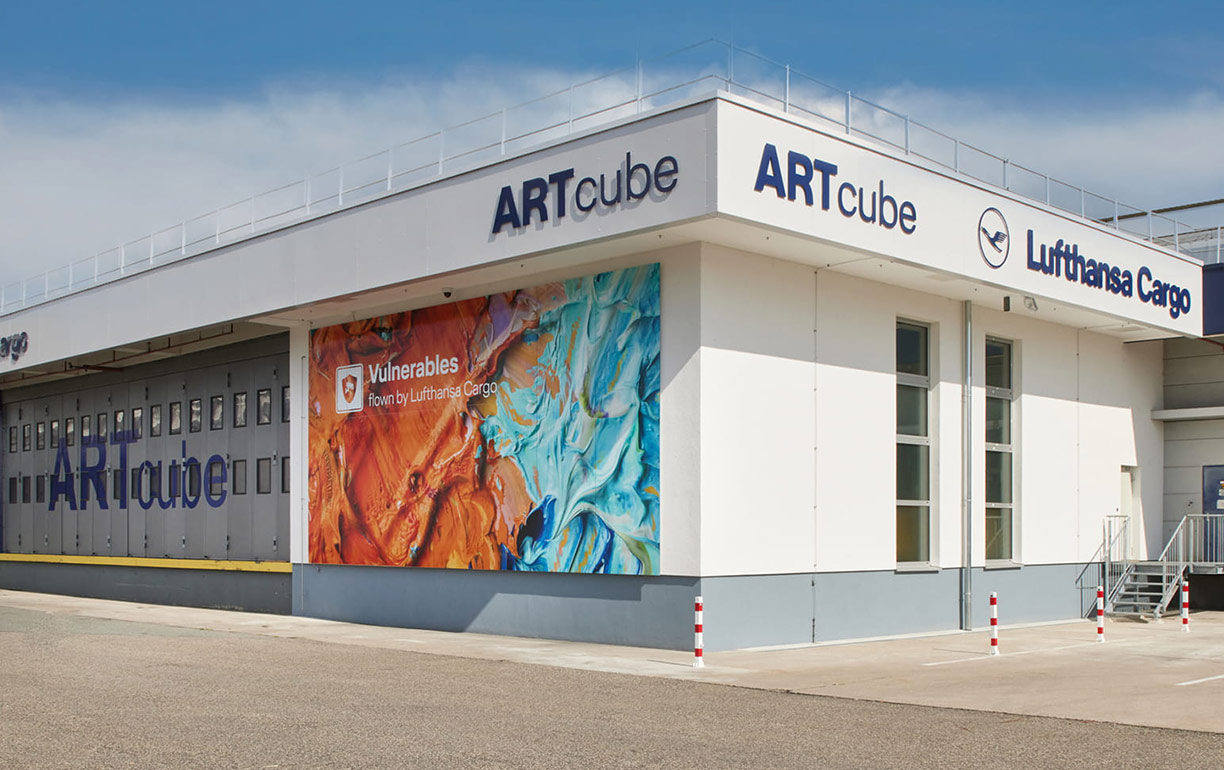
"We have been cooperating with Lufthansa Cargo worldwide for decades. We appreciate the unparalleled route network, especially from and to the cultural hotspot Europe, the close and competent exchange with the employees and the art-specific infrastructure such as the ARTcube in Frankfurt,” says Rachel Riddell from Hasenkamp, summarizing the cooperation.
After arrival in Frankfurt, the artworks are stored in the ARTCube at the airline's home airport. This is specially designed to meet the climate and security requirements for the storage of sensitive works of art. The shipment is handled by specially trained staff who know the requirements of the special cargo inside out. In addition, Lufthansa Cargo also offers the option of having a supervisor accompany the shipments at the Frankfurt hub.
Back in Europe, the collection was just shown in Venice. From March to June 2024, a selection of works from the Museum Berggruen was on display at two locations in Venice in dialog with works from the collection of the Gallerie dell'Accademia. This will be followed in the fall by a comprehensive exhibition at the Musée de l'Orangerie in Paris. In 2026, the museum in Berlin will reopen and welcome the artworks back home.
Stella Wang could then view the exhibition again in its home country and fulfill two more dreams. She would like to see Documenta at the Museum Fridericianum in Kassel and La Biennale di Venezia. Both Wang and Montua emphasize the significance of traveling art. “Nowadays most images are available online. You can find mostly anything on the internet. But being able to actually see the original work is, of course, something very, very special,” says the Head of Museum Berggruen.
|
Back in Europe, the collection was just shown in Venice. From March to June 2024, a selection of works from the Museum Berggruen was on display at two locations in Venice in dialog with works from the collection of the Gallerie dell'Accademia. This will be followed in the fall by a comprehensive exhibition at the Musée de l'Orangerie in Paris. In 2026, the museum in Berlin will reopen and welcome the artworks back home. |
Stella Wang could then view the exhibition again in its home country and fulfill two more dreams. She would like to see Documenta at the Museum Fridericianum in Kassel and La Biennale di Venezia. Both Wang and Montua emphasize the significance of traveling art. “Nowadays most images are available online. You can find mostly anything on the internet. But being able to actually see the original work is, of course, something very, very special,” says the Head of Museum Berggruen.
|

